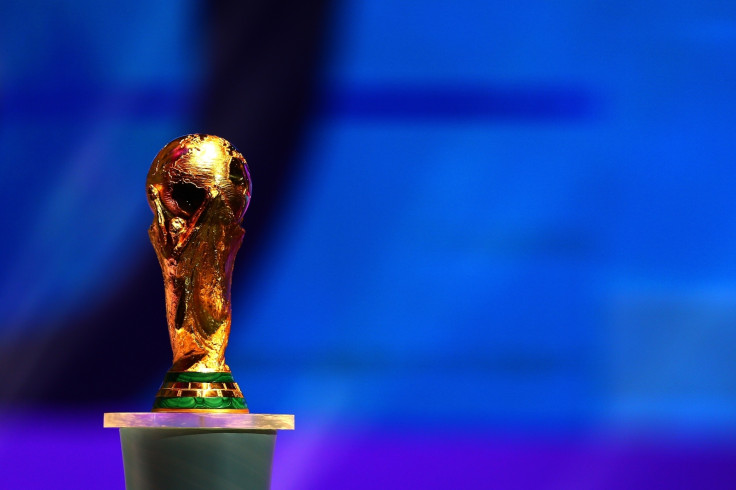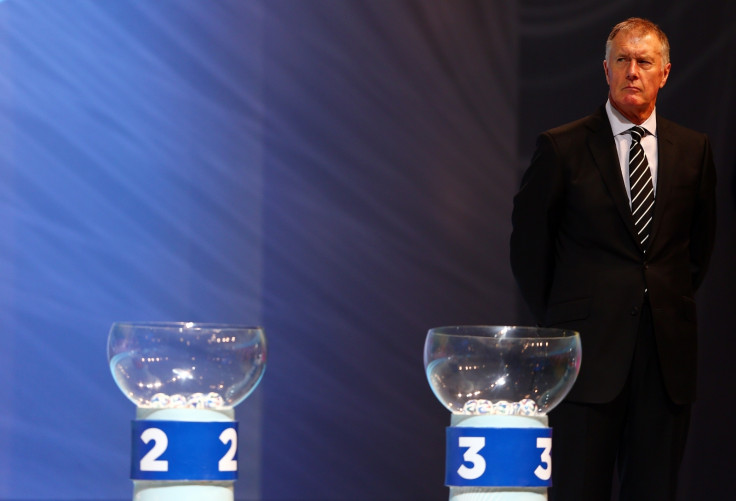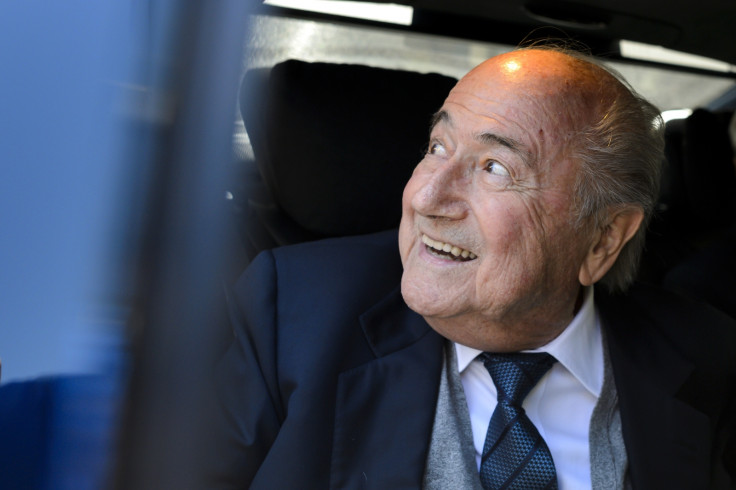Fifa World Cup 2018 draw: Pots, seeds and format explained for Kremlin ceremony
IBTimes UK looks at all the information regarding the draw for the 2018 World Cup in Russia.
Almost exactly seven years since Russia was handed the keys to the biggest global event in sport, its duties as the hosts of the Fifa World Cup in 2018 begin in earnest with the draw for the group stage of the competition.
Vladimir Putin may not have been in Zurich to celebrate the dubious awarding of the tournament (Qatar would later be given the upcoming 2022 edition) but inevitably he looms heavily over proceedings in Moscow.
The draw will take place at the Kremlin, the nerve centre of Russia politics and the previous home of the Soviet Union, a one-party state formerly led by the Communist Party. Fifa will be right at home.
Alongside hosts Russia, the lowest ranked side heading into next summer, 31 other sides have navigated their way through a complicated and exhaustive qualifying phase lasting over two-and-a-half years.
Excitement can finally begin for those nations and their labours will finally bare fruit, as they learn their three opponents in the group phase and their possible route to becoming the winners of the 21st edition of football's premier event.
But how will it all work and who exactly can draw who? IBTimes UK has all the answers ahead of the draw on Friday [9 December] including to the question everyone is asking: Will Russia, implicated in the manipulation of events across the world in recent years including the election of Donald Trump as President of the United States, fix the draw?

World Cup draw pots
The 32 entrants have been placed into four pots based on their Fifa world ranking at the end of the main qualifying period in October 2017. The only exception is Russia, who as hosts are automatically placed in pot one along with the seven highest ranked sides.
Pot 1: Russia, Germany, Brazil, Portugal, Argentina, Belgium, Poland, France
Pot 2: Spain, Peru, Switzerland, England, Colombia, Mexico, Uruguay, Croatia
Pot 3: Denmark, Iceland, Costa Rica, Sweden, Tunisia, Egypt, Senegal, Iran
Pot 4: Serbia, Nigeria, Australia, Japan, Morocco, Panama, South Korea, Saudi Arabia
World Cup draw format
Here comes the technical part. Each of the 32 competing nations will be decanted individually into eight groups, with four teams in each. At the finals each team plays each other once, with the top two progressing to the knock-out phase.
No two sides from the same pot can be drawn against each other, nor can two teams from the same confederation. This is with the exception of sides from the Uefa pathway – which provides 14 qualifiers – with no more than two permitted in each group.

The team will be drawn in pot order, with their position in the group also drawn to determine the order of their opponents. Russia will automatically be placed into position A1 and will play the team drawn in A2 in the opening game in Moscow on 14 June.
The draw is only complete when all 32 teams are positioned in the eight groups.
Who can England draw?
Gareth Southgate's side nurdled their way into the World Cup after sidestepping a group devoid of threat or menace, meaning they are at best ill-prepared for the challenge that will welcome them in Russia.
Friendly draws with Germany and Brazil have at least shown them to be full of heart and metal, but they are yet to be truly tested in a competitive setting since their embarrassing exit at Euro 2016 at the hands of Iceland.
To find out the best and worst scenario for the Three Lions, we have put together both the dream scenario for the 1966 winners and the one they should fear the most. Former Football Association chairman Greg Dyke's cut-throat gesture could be out in force again.

Who is hosting the draw?
"It makes you feel sick, actually, the whole Fifa thing, the corruption at the top level is nauseating. Sepp Blatter likewise has run it like a dictatorship for so long and he comes out with so much nonsense," said the waspish Gary Lineker in August 2014. And the former England striker has hardly softened his stance since, since labelling them a "rotten organisation".
But in a remarkable U-turn, Lineker has been enlisted by world football's governing body to present the draw to the 6,000 in attendance and the millions watching at home. Lineker, who has nearly seven million Twitter followers, has denied this represents hypocrisy, but nevertheless he will be front and centre at the Kremlin.
He will be joined by Fox Sports journalist Maria Komandnaya. Though unimportant in many parts of the world, the presenter's attire will particularly interest those watching from Iran whose coverage of the 2014 draw was blocked out due to the dress worn by then-adjudicator Fernanda Lima, which breached broadcasting regulations.

To ensure that their grand introductions lead to the draw bleeding into your evening commute, a stellar list of stars, and Diego Forlan, will assist with the draw. Alongside the Uruguayan, Laurent Blanc, Gordon Banks, Cafu, Fabio Cannavaro, Diego Maradona, Carles Puyol and Nikita Simonyan will also participate.
Will Russia fix the draw?
Not helped by widespread accusations they influenced the outcome of last year's US presidential election, Fifa have been quick to dismiss any notion the draw could be rigged to favour the host nation.
During the dress rehearsal ahead of the ceremony, Russia were paired with Peru – who are perceived as the weakest nation in pot two - and avoided the likes of Spain, England and Croatia. This follows claims from former Fifa president Sepp Blatter that previous Uefa draws have been influenced by 'heated balls'.
But world football's director of competition, Chris Unger, said: "There's no truth to that. They're all the same; they don't feel any different, they don't look any different, with the exception of the red balls, which are there for a purpose. It's entirely random and by chance how the groups get formed at the end."






















